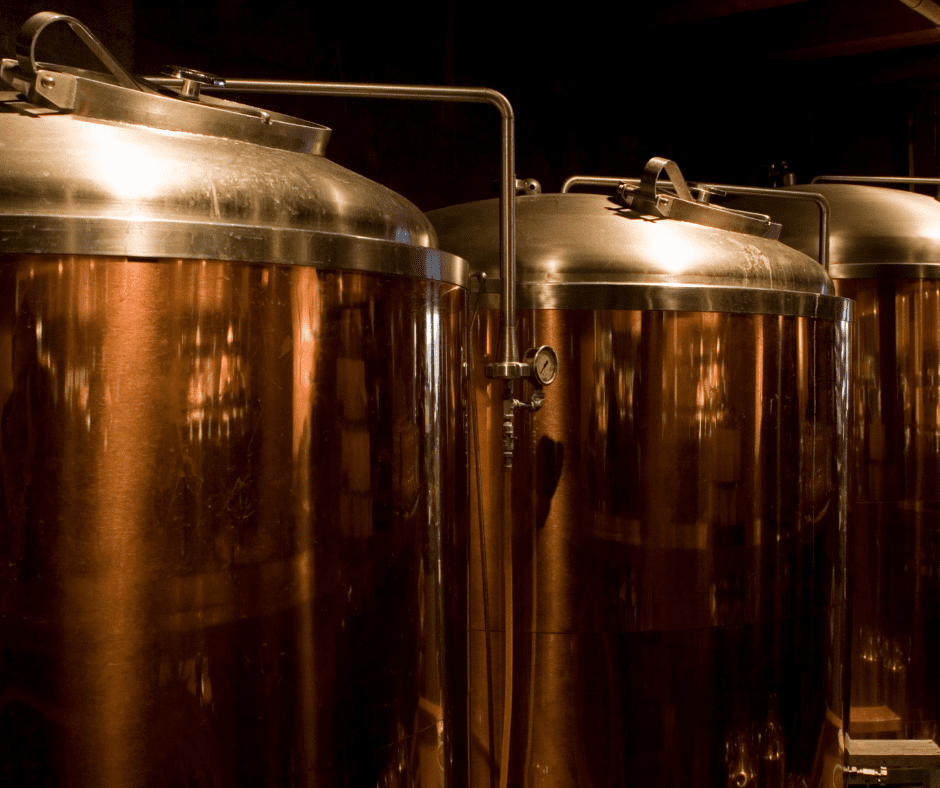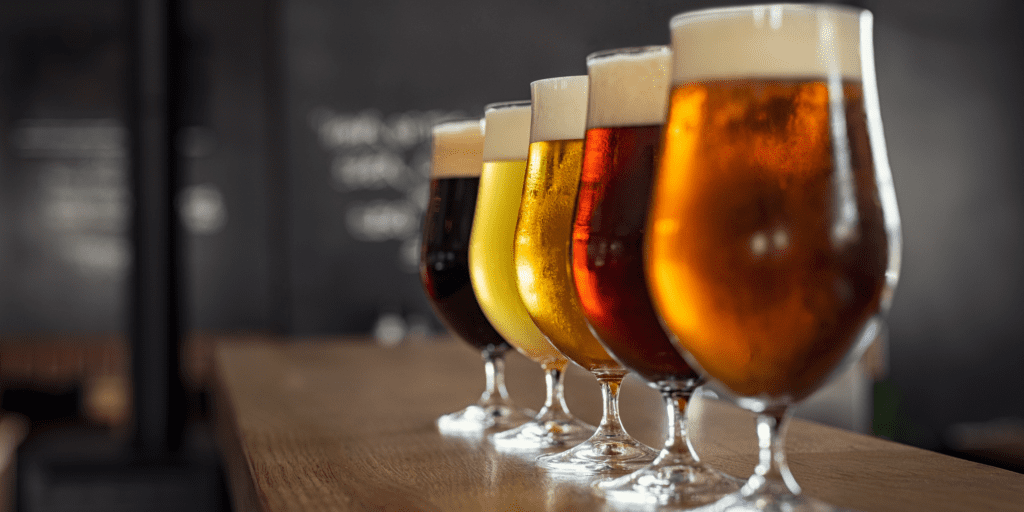Brewing Post-Texas Revolution

Let’s embark on a journey through Texas beer history, a story as expansive as the Lone Star State itself. Our tale commences in the heart of the 19th century. German immigrants, carrying the brewing traditions of their forefathers, planted their roots in the fertile soil of Texas. Beer was made in small batches in homesteads and taverns prior to the 1850’s. Commercial breweries, on the other hand, didn’t start to emerge until 1855 in Texas. The inception of this brewing legacy is widely attributed to William A. Menger.
Menger initially began his Texan journey as a barrel maker, utilizing his skills in a cooperage. However, after a few years, Menger decided to shift his focus from crafting barrels to filling them with liquid gold – beer. In 1855, a mere 19 years after the fall of the Alamo, he embarked on a new venture. Just east of Alamo Plaza, he constructed Menger’s Western Brewery.
Fast forward to 1870, and Texas had blossomed into a thriving community of twenty-seven breweries, predominantly nestled within German communities. Among the enduring landmarks of that era is the Historic Menger Hotel, which proudly stands tall in San Antonio to this day. Remarkably, the hotel still preserves its large beer cellar, boasting three-foot-thick stone walls. What’s more, this unique cellar once utilized the Alamo Madre ditch, which flowed through what is now the hotel’s patio, providing a chilling resource for the beer produced by the brewery.
The Brewing Industry and the Civil War

The brewing industry was not immune to the tough times that lay ahead. The Civil War, a period of profound national strife, brought with it a scarcity of resources that hit all industries in Texas, including brewing. Many breweries were forced to shutter, but a resilient few weathered the storm and continue to operate. One such brewery that stood the test of time was the Kreische Brewery, founded by German immigrant Heinrich Kreische in the 1860s. Kreische, a skilled stonemason, built his brewery on a bluff overlooking the town of La Grange, taking advantage of the natural spring water that flowed there. Despite the challenges of the Civil War and the scarcity of resources, Kreische’s brewery thrived, producing a lager beer that was distributed throughout Texas.
The value of the Kreische Brewery to Texas beer history has not been lost on modern brewers. San Antonio yeast lab Community Cultures has taken swabbed yeast samples from the site and is working with the Texas Historical Commission to retrieve yeast from Kreische’s original brewing archive. The goal is to recreate Kreische’s beer, allowing people to sip on a direct descendant of the original brew that was made 150 years ago.
Post-Civil War Resurgence

Post-Civil War, Texas embarked on a path of reconstruction and growth, and the brewing industry mirrored this resurgence. Thereafter, the number of breweries swelled from 15 in 1873 to 34 by 1890, ranging from quaint local operations to larger enterprises that distributed their beer across the state. A variety of factors drove the growth of the brewing industry in Texas during this period.
The end of the Civil War brought about a period of economic recovery and expansion. The state’s population was growing, and with it, the demand for goods and services, including beer. Additionally, advancements in brewing technology during the late 19th century made it easier and more cost-effective to produce beer, contributing to the growth of the industry. The late 19th and early 20th century saw an squeeze on smaller local breweries as larger regional breweries started to pop up under names like Lone Star (Adolphus Busch), Pearl, and still one of my favorites, Spoetzl Brewery in Shiner, Texas.
The Prohibition Era and its Aftermath

Yet, the brewing industry’s growth trajectory was not without its hurdles. The late 19th and early 20th centuries saw the rise of the national Prohibition movement, leading to a fierce debate within Texas. While many Texans, particularly in rural areas, supported Prohibition and viewed alcohol as a societal ill, others, especially in urban locales and German communities, staunchly opposed it. They championed personal liberty and the economic significance of the brewing industry.
Despite this resistance, lawmakers enacted Prohibition laws. Unquestionably, this legislation cast a long, ominous shadow over the brewing industry, forcing breweries to make a difficult choice. They had to either shut their doors or pivot to producing non-alcoholic beverages, which effectively silenced the once vibrant beer culture in Texas. Yet, amid this restrictive environment, rumors circulated. People said that some rebellious breweries kept the high-quality beer (and other spirits) flowing out the back door. In doing so, they boldly defied the politicians and their restrictive laws, keeping the spirit of Texas brewing alive.
The Modern Craft Beer Revolution
 ©Ridofanz via Canva.com
©Ridofanz via Canva.com
A craft beer revolution has characterized the latter half of the 20th century and the early 21st century. New generations of brewers and beer enthusiasts have rekindled Texan’s love for beer. The slow removal of some prohibition-era beer laws and regulations, which favored consolidation and created a high barrier for entry, has occurred in the nearly a century since the repeal. Consequently, the number of local craft breweries (and kegs of good quality beer) has increased exponentially.
The craft beer revolution has not only revived the brewing tradition in Texas but also contributed to the local economy. Undoubtedly, the rise of craft breweries has created jobs, stimulated tourism, and fostered a sense of community among beer enthusiasts. As the craft beer scene continues to evolve, it’s clear that the future of brewing in Texas is as bright and promising as its rich past.
Join the Journey with City Brew Tours

As we wrap up this intoxicating journey through Texas beer history, why not continue the exploration in person with a City Brew Tour? Whether you are looking for a public tour, a private tour, or a corporate event, there’s nothing quite like tasting the legacy of Texas brewing firsthand, one pint at a time. Check out our amazing affiliates, learn more about beer history, find out how your favorite beer is made, and enjoy several samples from some of the best breweries in Texas by booking your tour today!
If you have any beer-related historical documentation, stories, or photos that you’d like to share, please reach out. Send your stories, articles, or photos to [email protected]. Cheers!
References:
- Immigrant Entrepreneurship. (n.d.). William Achatius Menger. Retrieved from https://www.immigrantentrepreneurship.org/entries/william-achatius-menger/
- Texas Highways. (2023). Wander the Ruins of This 150-Year-Old Brewery in La Grange. Retrieved from https://texashighways.com/eat-drink/breweries-distilleries/wander-the-ruins-of-this-150-year-old-brewery-in-la-grange/
- Texas State Historical Association. (n.d.). Brewing Industry. Retrieved from https://www.tshaonline.org/handbook/entries/brewing-industry
- Texas State Historical Association. (n.d.). Spoetzl Brewery. Retrieved from https://www.tshaonline.org/handbook/entries/spoetzl-brewery